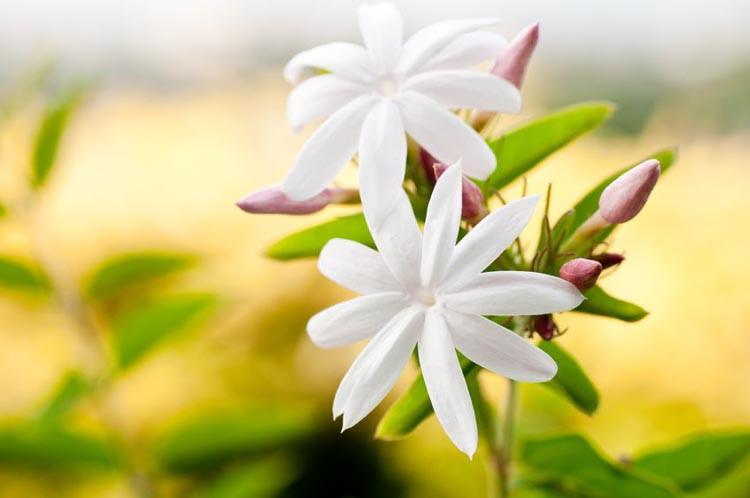Jasminum
Jasmine (Jasminum) is a popular and captivating flowering plant known for its enchanting fragrance and stunning blooms. Here are some key facts:
Botanical family: Jasmine belongs to the Oleaceae family, which includes approximately 200 species of shrubs and vines, sharing a close relation to the olive family.
Origin: Jasminum species are native to various regions, including Asia, Africa, the Middle East, and the Pacific Islands, with the majority of species found in tropical and subtropical climates.
Common species: Some popular species include Jasminum officinale (common jasmine), Jasminum polyanthum (pink jasmine), and Jasminum sambac (Arabian jasmine).
Growth habit: Jasmine plants can be shrubs, climbers, or ground covers, depending on the species. Climbing varieties typically require support structures, such as trellises, fences, or arbors, to help them ascend.
Flowers: The flowers come in a variety of colors, such as white, yellow, or pink, with tubular or trumpet-like shapes. The blossoms are renowned for their sweet, intoxicating fragrance, which is often more potent in the evening and night, attracting pollinators like moths.
Blooming season: The bloom time varies depending on the species, but most flowers typically bloom from late spring to early summer. Some species may continue to produce flowers intermittently throughout the summer and into early fall, while others may have a more concentrated blooming period.
Night-blooming: Some species, such as Jasminum sambac and Jasminum grandiflorum, bloom at night, releasing their intoxicating fragrance during the evening hours.
Hardiness: Many varieties are suitable for USDA Hardiness Zones 7-10, while some can tolerate colder temperatures down to Zone 6 or even Zone 5 with adequate protection.
Symbolism: Jasmine symbolizes love, beauty, sensuality, purity, and spirituality across various cultures. It’s often used in wedding ceremonies and religious rituals.
Uses: Jasmine plants are valued not only for their fragrance but also for their ornamental appeal, which includes attractive foliage and flowers. They can be trained to grow on trellises, arbors, or fences. They can also be grown in containers, making them suitable for patios and balconies, or used as a ground cover to control soil erosion. Certain species, such as Jasminum sambac (Arabian jasmine), can be grown as indoor plants, providing year-round fragrance and beauty.
The fragrance is highly prized and used in perfumes, essential oils, and aromatherapy. Jasmine is also used in teas, most notably green tea scented with jasmine blossoms, which is believed to have various health benefits.
Care requirements: Jasmine plants need well-draining soil, bright but indirect sunlight, and consistent moisture. They prefer moderate to warm temperatures and can tolerate some frost, depending on the species.
In summary, jasmine is a captivating flowering plant with an alluring fragrance and versatile growth habits, making it a popular choice for gardens, landscapes, and indoor cultivation. Its charming blooms and rich symbolism make it a beloved plant worldwide.

